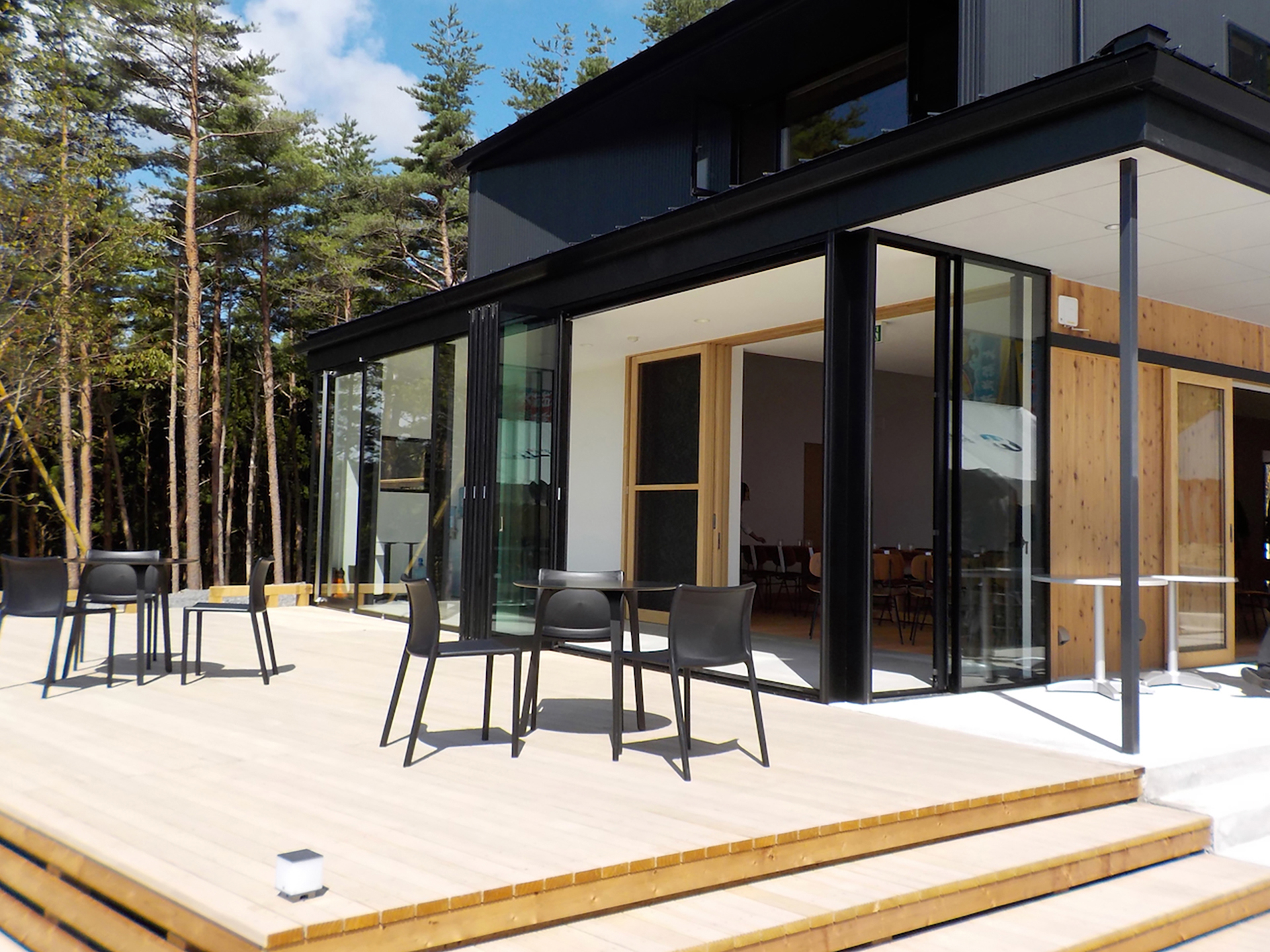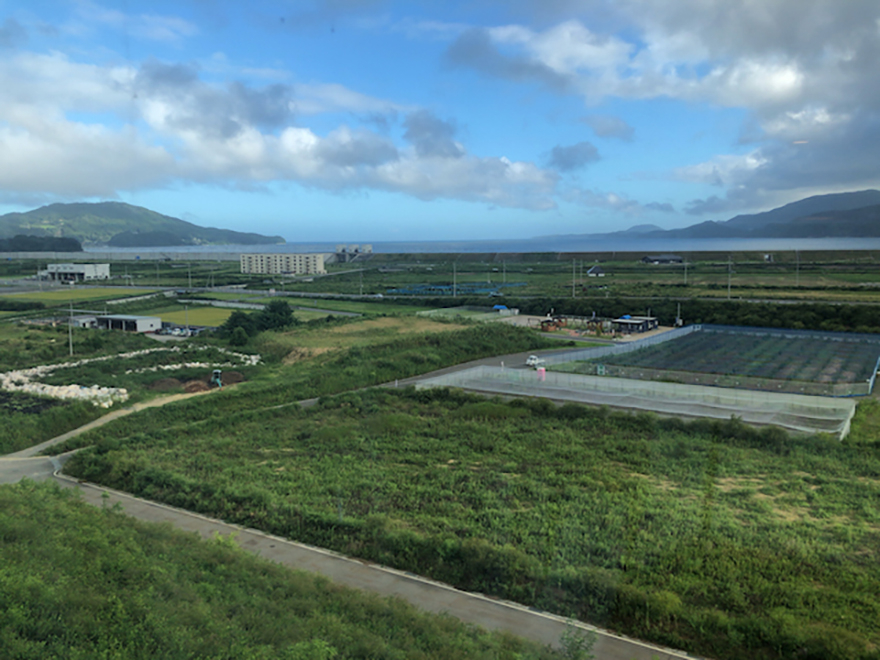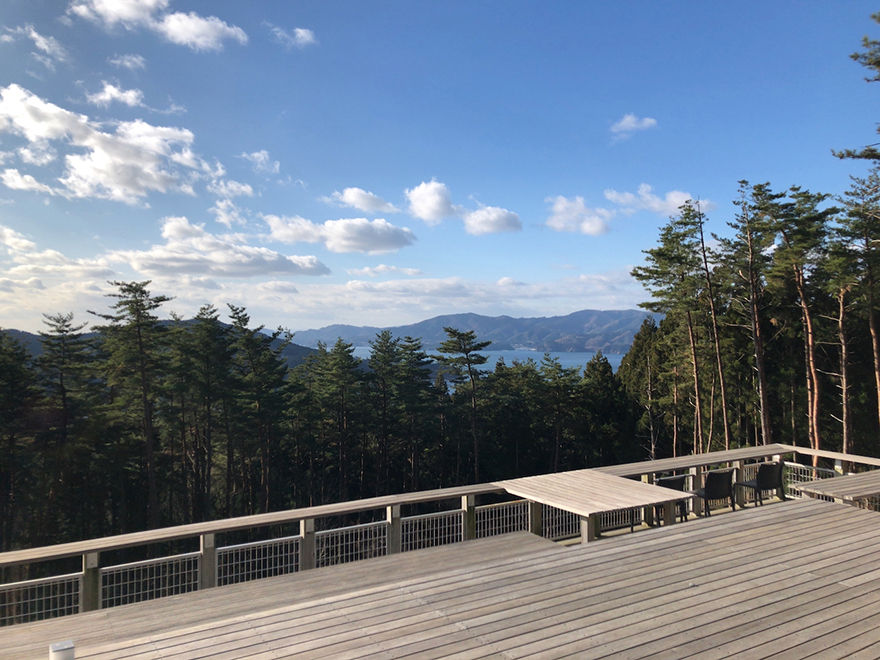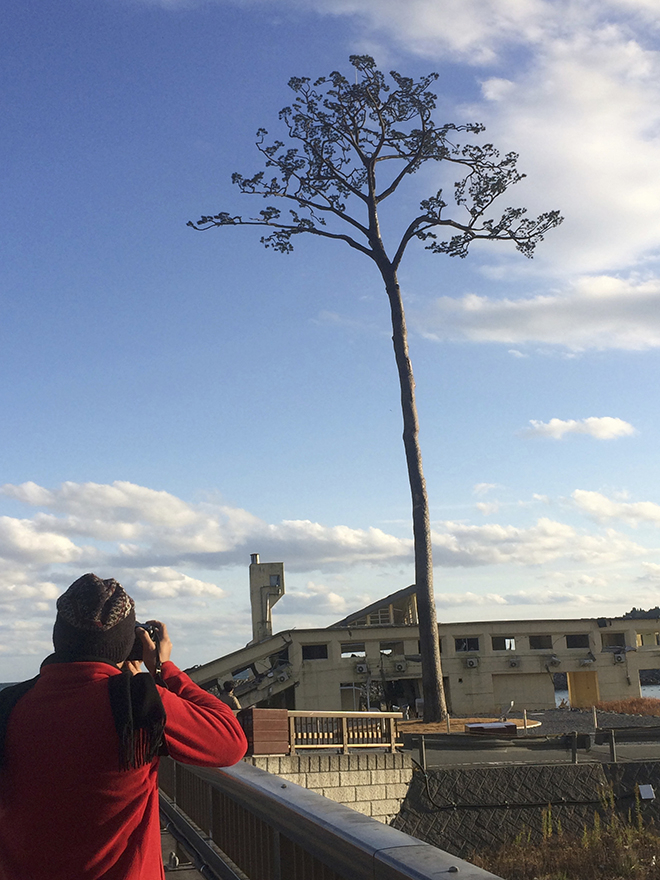Artist-in-Residence (5):
Natural disaster and AIR—Rikuzentakata (1)
By Hinuma Teiko

◉ Taking on a new AIR
The 12 years I spent absorbed in one trial and error after another beginning with my involvement in the preparatory office to establish the Aomori Contemporary Art Centre (ACAC) practically flew by. As a public enterprise, the AIR program faced many problems, including its “incomprehensibility” and “lack of visible outcomes.” At the same time, however, from the fortuitous encounters and engagement between ideas and creative activities emanating from artists, or in other words “(private) individuals,” and the ”public,” including the many viewers/participants and local history and culture, came a steady stream of works, experiences and connections beyond language the likes of which can only be gained in the “here and now.” These will accumulate like strata and ultimately, in 10, 20 or 100 years’ time, recombine not as local culture, which is to say as dazzling results, but as dust and dirt. This is culture, this is the mission of the ACAC, and I have always believed it will lead to results. I also believe that while we sometimes clashed and had unreasonable expectations of each other, in the course of this initiative, a first with few model cases to draw on, not only I, but all the directors, curators, technical and administrative staff, and members of the volunteer support team broke new ground. This was a time of together addressing the proposition, “What is the ‘public’?”, and being able to be present in a place where people and art converged was a time filled with so much joy I completely forgot even the worst hardships. However, though to me it felt like a brief period, 12 years is by no means short, and just as I was searching again for my own role during a period when times were continually changing an opportunity arose. There were still many things I wanted to tackle, and while the prospect of leaving my hometown of Aomori where my family were based filled me with sadness and anxiety, I decided to move into work related to educating the next generation.
Then, that unforgettable day arrived.
March 11, 2011. I had only just returned home the day before after finishing looking for a new house in Tokyo. The power went off over a wide area in Aomori City where I lived with my family and we gathered in a single room where we spent the night. Bit by bit we learned what had happened based on the information that came in over an emergency radio. Power was restored the next day, and after turning on the TV we watched the images on the screen in silence. A massive tsunami had engulfed coastal areas in various parts of eastern Japan and the Fukushima Nuclear Power Plant had exploded and collapsed. Many precious lives had been lost and the whole world was gripped by sadness and fear. The values I had believed in until then were shaken to the core and I was confronted with my own powerlessness and weakness at not being unable to do anything.
Soon, a number of emails started arriving from artists who had completed residencies at the ACAC. “Is Japan and the Tohoku region alright?” “Is there anything I can do?” I was unable to find the appropriate words to reply to these questions immediately, but the one message I did convey was, “Now is not the time when you or art can play a role. Please wait a little longer. That time will definitely come.”

The current landscape as of August 2023. There are almost no traces of the tsunami left behind.
That “time” came around two years after I joined the faculty of a university in Tokyo. I was reunited at a certain event with Nishimura Yoshiaki, a designer who does research on how people work, who had participated in disaster relief activities as a volunteer soon after the earthquake struck. In the course of discussing how we were each getting along he mentioned he was involved with Hakoneyama Terrace, a new accommodation facility being planned in Rikuzentakata, Iwate. The facility is owned by Natsukashii Mirai Souzou Co., Ltd. (The Reminiscent Future Creation Co., Ltd.), a company established by local businessowners and others with the aim of helping rebuild Rikuzentakata. The words “natsukashii mirai” are from the Japanese the title of the book Ancient Futures: Learning from Ladakh by the Swedish anthropologist Helena Norberg-Hodge. They were chosen out of admiration for Norberg-Hodge’s way of thinking and writing exploring what kind of future we can imagine in the face of the environmental devastation, destruction of nature and breakdown of local communities occurring under globalization, and in the hope that the Rikuzentakata’s future would be as a “creative” region. A term of ten years was set for the project, the aim of which was to build a company that would create employment for a total of 500 people in the region. Hakoneyama Terrace is one of the company’s core projects and was to involve constructing an accommodation facility halfway up a mountain overlooking tranquil Hirota Bay, which is located on the Sanriku Rias Coast between the Hirota and Karakuwa peninsulas, based on the concept, “Leveraging trees and people to create connections between them.”

Hakoneyama Terrace
A common space would be located in the middle of the building to create opportunities for local people and visitors to mingle and learn from each other. As well as encouraging human interaction, the project also aimed to create a system in which new energy and the economy could circulate by making the most of local timber resources not only as building materials, but also as part of a thermal energy supply with the installation of pellet heaters and boilers. Nishimura took on the role of networking with the various people involved in the formulation of these concepts, in design proposals, in architecture and in the various workshops that would be held. I was incredibly moved by this desire to put the positive memories people had of the region’s rich resources, history, culture, and landscape to use in creating a prosperous future. What could I do to help? The answer was to introduce an AIR structure, and in so doing sow the seeds to bring artists and local residents together, to imagine the future together, and to lead to creation. I firmly believed that the only way to do this was through AIR. And virtually uninvited I proposed an AIR program. While unconvinced, the company directors and staff members agreed to give it a try. However, directing it, including securing the project budget and personnel, would be left up to me. The reconstruction effort had only just begun in the region, and people had lost their homes and livelihoods and were forced to live in temporary housing as the removal of debris and preparation of land for housing developments continued. There were no funds, no people and no location. With everything lacking, would an AIR program really become a reality? So it was that the challenge of starting a new AIR program got underway.

Standing on the site of the Takada Matsubara forest, the “Miracle Pine Tree” is one of the ruins left behind from the Great East Japan Earthquake.
◉ Landscape of memories for Reminiscent Future
In order to implement an AIR program, having a “base” is a major prerequisite. What could I do about the “base” that would become the foundation of the AIR, whose role is to provide a place where artists can stay and work on their art? I decided I wanted to have as the “base” not a physical space or place, but the very “memories” of the people who have lived in Rikuzentakata; in other words, I wanted to make it a place where people felt at peace. Envisaging establishing a “landscape of memories” based on the artists’ research and art and connecting from there to the imagination of the future, I named the project “Rikuzentakada Artist in Residence Program – Landscape of Memories for Reminiscent Future.” As for the selection of the artists, I would offer residencies directly to artists I judged to be suitable from among candidates I had worked with in the past or who were recommended by other reliable AIR organizations. These candidates would be artists who did not create “things” with materials, but were involved with expression concerning the body or memories and had profound insight into local culture and the ability to communicate. This was based on the understanding that in a region where the people were exhausted and both mentally and physically scarred, the things people would be most concerned about were the behavior and attitudes of the “outsiders,” including both the artists and myself and the other staff members. As well, the emphasis would be on community interaction and processes such as research and documentation, and we would not necessarily require the creation of art that is usually a condition of AIR programs that operate as so-called “public enterprises.” I planned a flexible program, however, so that if an appropriate “something” did appear, a presentation or exhibit could be held in accordance with suggestions from the artist concerned. For accommodation, the quarters owned by a driving school run by the company’s representative director that housed people attending driving camps would be used. Matsuyama Jun, an artist from Miyagi, and Noda Sayuri, who had just returned from a working holiday in Canada, were engaged as the secretariat/coordinators, and funding was eventually secured when the program was selected as a subsidized project by the Agency for Cultural Affairs.
In November 2013, the first three-month residential program got underway with the arrival of three artists: dancer and choreographer Sioned Huws (Wales), photographer Leo van der Kleij (Netherlands), and multi-media artist Jaime Jesus C. Pacena II (Philippines).(To be continued)
AIR (1): A place that guarantees freedom, safety and diversity, and inspires artistsAIR (2): AIR —Encounters with place, unique dialog-driven expression, cross-cultural respect and understanding
AIR (3): Perspectives on the transmission of culture, AIR, and sustainability
AIR (4): The eyes of a pilot drifting through the world
AIR (6): Natural disaster and AIR—Rikuzentakata (2)
AIR (7): Networks that connect with the world, AIRs that connect to the future
Hinuma Teiko
Professor at Joshibi University of Art and Design, head of the AIR Network Japan Preparatory Committee, Art Director at Tokiwa Museum. Hinuma worked at the preparatory office to establish the Aomori Contemporary Art Centre from 1999 and served as a curator there until 2011, providing support for artists, primarily through residencies for artists, and planning and running various projects and exhibitions. She has filled various other positions including Project Director of the Saitama Triennale 2016 and Program Director of the Rikuzentakata AiR Program.